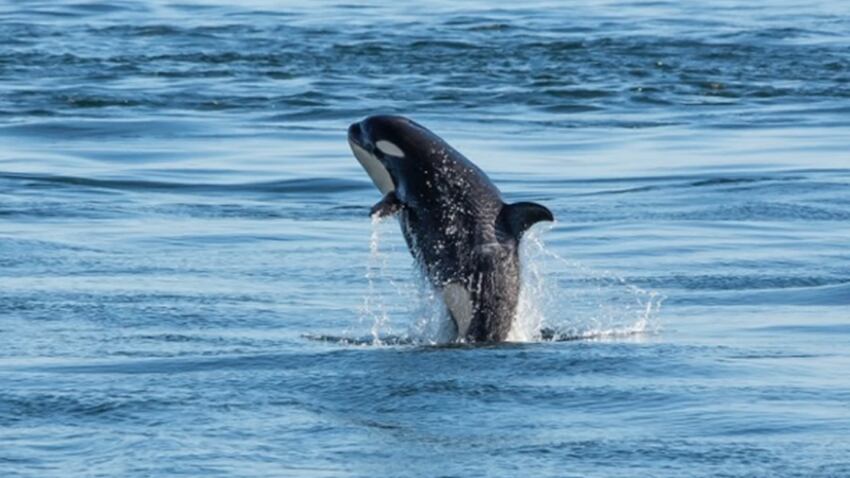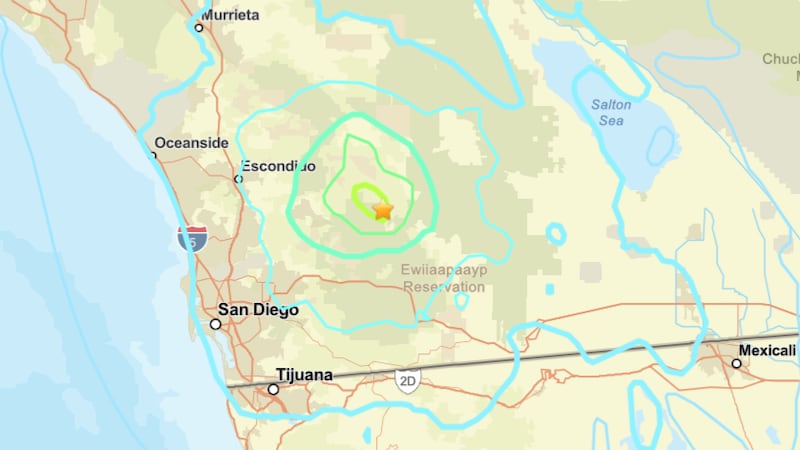There was disappointment looming early this morning over the possibility that 3-year-old orca J50, Scarlet, could have died, but was spotted in Hein Bank.
NOAA Fisheries public affairs officer Michael Milstein confirmed to KIRO 7 about noon Monday the young female Southern Resident killer whale was seen by a number of agencies after the ailing orca reportedly did not return to the Salish Sea with other members of J Pod over the weekend.
On Sunday, The Center for Whale Research, Soundwatch and the University of Washington spent much of the day with J Pod, including J50's mother, but J50 was not present, Milstein said.
The last reported sighting of J50 was said to be on Thursday, Aug. 30, by Fisheries and Oceans Canada. J50 was lagging behind about a half-mile from her siblings, J16 and J26, who were also lagging about three nautical miles behind most of J Pod, NOAA reported.
It was reported that J50 appeared to be struggling to keep up.
Scroll down to continue reading
More news from KIRO 7
- Skateboarder Cory Kennedy sentenced to four years in prison after killing friend in DUI crash
- South Carolina woman charged with poisoning, killing husband with eye drops
- One dead in shooting in Everett on Sunday morning
- Extra DUI patrols on as study shows troubling trend
- Do you have an investigative story tip? Send us an email at investigate@kiro7.com
According to NOAA, after some initial fecal samples were collected from the young orca, results showed she had a parasite, which is not uncommon for killer whales and other marine animals.
Samples were also taken from J16/Slick and J42/Echo.
Officials said the worm is usually not an issue for healthy animals, but could pose problems for animals that experience other issues or that are emaciated. The parasites can penetrate the stomach lining or other internal organs, introducing bacteria to the bloodstream.
It was not clear if the samples were actually from J50, but a veterinary team did put together a plan to include a dewormer, in addition to an antibiotic, to treat her.
The Lummi Nation attempted to feed live salmon from a boat to J-50 on Aug. 12, but it’s unclear if she ate.
J-50 was given antibiotics via a dart as she and her pod entered U.S. waters on Aug. 9. Researchers also obtained a breath sample to further assess the orca’s health. They’ve ruled out respiratory diseases as the cause of her condition.
It was believed the treatment would help reduce burdens to the orca’s system and allow her to start regaining weight that was lost.
NOAA said the dewormer and antibiotics have proven safe and successful in other whales.
When it comes to determining the loss of any of the Southern Residents, the standard is to spot a whale’s family group multiple times without them, NOAA said. This rule may be relevant for J-50 to confirm her status given how far she followed behind the other whales at times.
Officials considered J-50’s condition to be grave.
To help J-50, a team of international biologists, veterinarians, tribes and other partners came together to mobilize an effort to assess and treat the orca.
In late July, a mother orca, J35, had a calf which died shortly after birth. She carried the calf around on her forehead in mourning for days.
After the death of the calf, The Center for Biological Diversity and Orca Relief Citizens' Alliance sent a notice of intent to sue the Trump administration for failing to protect critically endangered orcas living in the Pacific Northwest.
In November 2016, they petitioned the federal government to designate a “whale protection zone” in an area conservationists say is critical to the population that has dropped to a 34-year low.
>> RELATED: NOAA: Humpback whale killed by apparent ship strike near Neah Bay
The proposed whale protection zone is 10 square miles off the western side of the San Juan Islands from Mitchell Point in the north to Cattle Point in the South. It seeks to ban all motorized boats in that area from April 1 to Sept. 30th, limiting the noise that gets in the way of orcas finding Chinook salmon, which are also in decline.
As for J50, NOAA says she has been spotted with J Pod and treatment to help the orca survive will continue.
Cox Media Group








